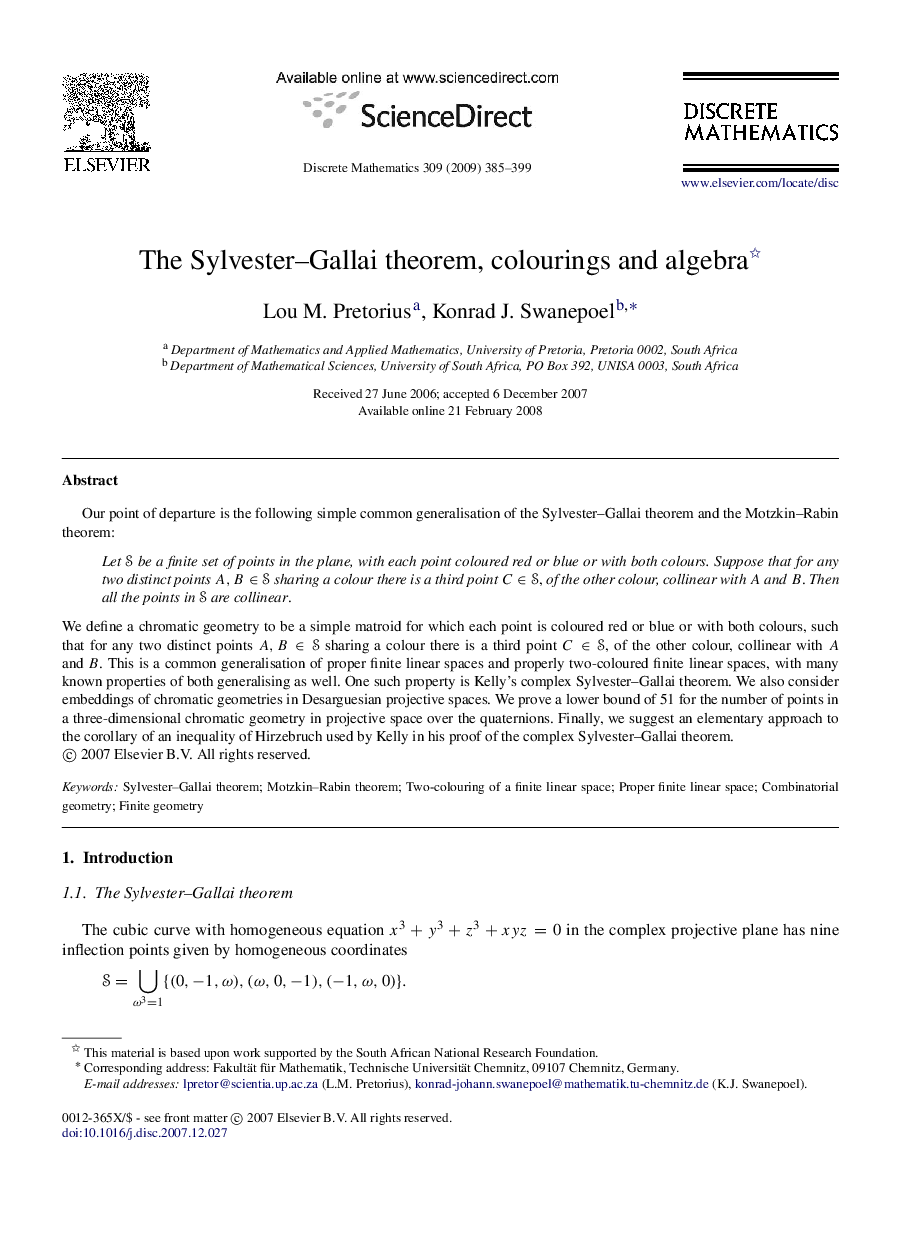| Article ID | Journal | Published Year | Pages | File Type |
|---|---|---|---|---|
| 4648668 | Discrete Mathematics | 2009 | 15 Pages |
Our point of departure is the following simple common generalisation of the Sylvester–Gallai theorem and the Motzkin–Rabin theorem: Let SSbe a finite set of points in the plane, with each point coloured red or blue or with both colours. Suppose that for any two distinct points A,B∈SA,B∈Ssharing a colour there is a third point C∈SC∈S, of the other colour, collinear with AAand BB. Then all the points in SSare collinear. We define a chromatic geometry to be a simple matroid for which each point is coloured red or blue or with both colours, such that for any two distinct points A,B∈SA,B∈S sharing a colour there is a third point C∈SC∈S, of the other colour, collinear with AA and BB. This is a common generalisation of proper finite linear spaces and properly two-coloured finite linear spaces, with many known properties of both generalising as well. One such property is Kelly’s complex Sylvester–Gallai theorem. We also consider embeddings of chromatic geometries in Desarguesian projective spaces. We prove a lower bound of 51 for the number of points in a three-dimensional chromatic geometry in projective space over the quaternions. Finally, we suggest an elementary approach to the corollary of an inequality of Hirzebruch used by Kelly in his proof of the complex Sylvester–Gallai theorem.
